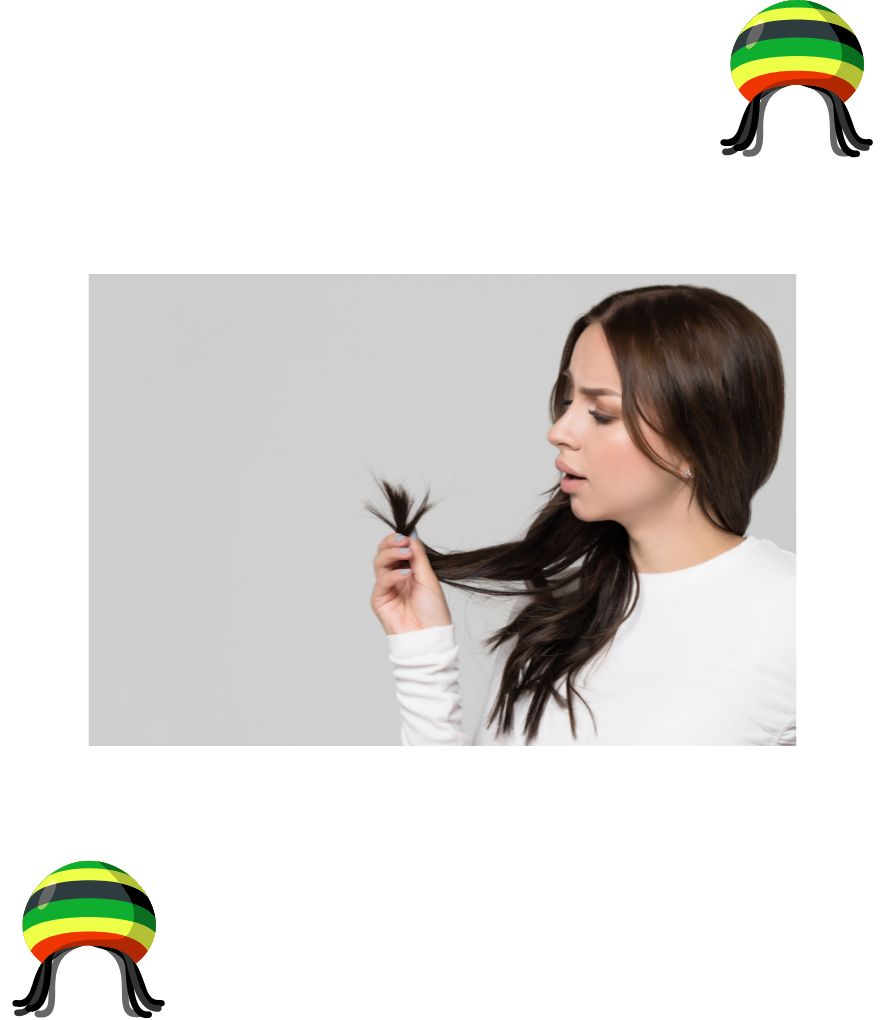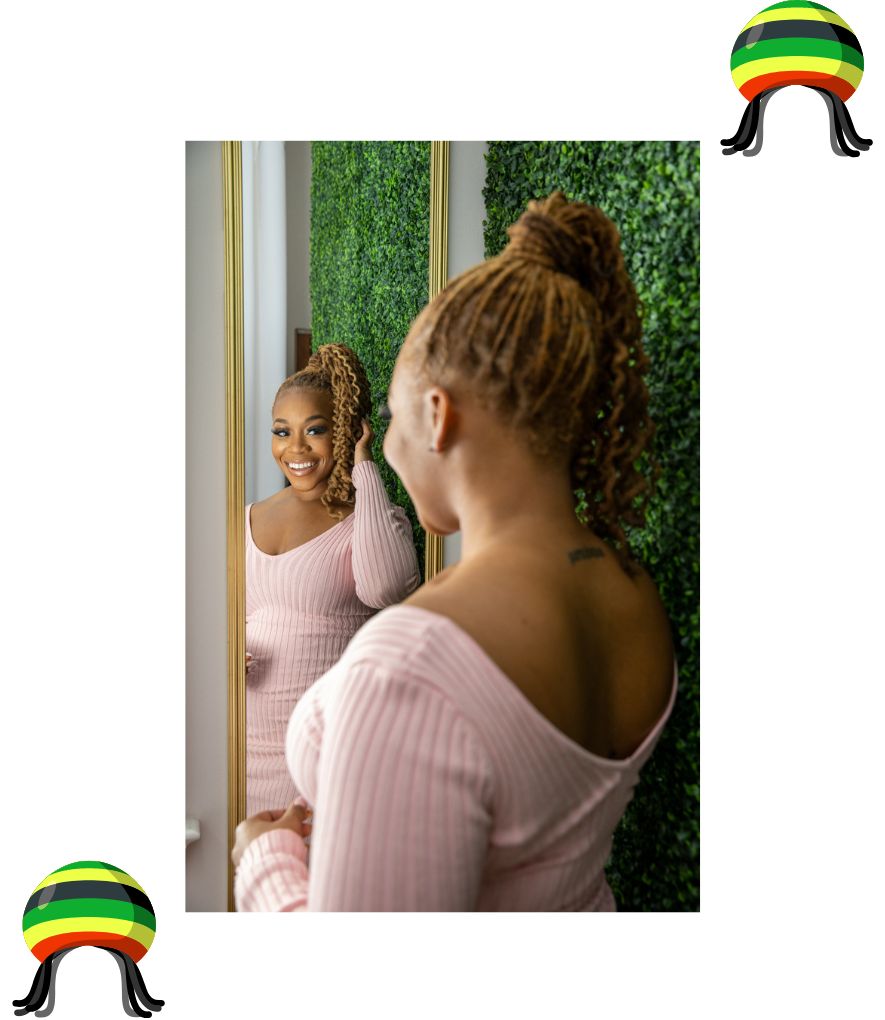I’m quite sure that a lot of people with dreadlocks wonder whether they should give their luscious set a trim every now and then.
You see, having a full head of mature dreadlocks is not always easy to maintain.
For some, the stress and annoyance of having to deal with hair getting in the way of things may just become too much to bear.
But at the same time, a person may not want to do a complete chop.
After all, if you’ve been growing your dreadlocks for years, one of the last things you’d probably want is to cut off all of your hair and look like everyone else out on these streets!
The option of trimming dreadlocks seems like a pretty viable alternative to undergoing a full slash, because you get to shorten the length of your hair to a manageable level, all whilst maintaining the distinct dreadlock style.
So, you already have your answer…
Dreadlocks can be trimmed down for the purposes of removing split ends, maintaining an even length, removing stray hairs as well as repairing damaged strands. Overall, trimming dreadlocks can be essential to maintaining their health and overall appearance.
Now, let’s explore this topic a little further.
Why do people choose to trim their dreadlocks?
There are a number of reasons people go down the route of giving their dreadlocks a trim.
I can personally attest to quite a few, so let’s look at each motive one by one.
Repairing damaged strands
Having kept my dreadlocks for close to eight years now, I’ve had to experience my fair share of damaged strands.
As the hair grows further away from the roots, it can sometimes thin in certain areas, particularly because there’s a much smaller concentration of hair at this part of the strand.
What I tend to see with my own dreadlocks is partial damage, which is where one of my dreadlocks will have noticeable thinning on a certain part of the length towards the end of the strand.
It usually looks like this:

In my case, I have a strong belief that I get damaged strands because of my decision to dye parts of my hair in a different shade.
The dyed parts usually thin out and I have to trim them off and let the hair grow back again.
Ultimately, this gives credence to my thought that dyeing dreadlocks can cause them to weaken.
Anyway, what I do is simply trim off the damaged part of my dreadlock with a pair of scissors and let it grow out once more.
Removing split ends
The problem known as split ends occurs when one hair shaft splits itself up into two or more strands.

I actually liken the appearance of split ends to the opening of a banana.

When you open up the peel it splits up into two or more different parts – the outer skin and the inner fruit itself.
Luckily this issue is easily solvable with a small snip.
You’ll want to take care of split ends as soon as you see them, because the longer you don’t attend to them, the more the hair will continue to split towards the root end, which causes even more damage.
This is where a simple trim comes in.
You’ll just cut the split end and if you decide to take the repair further, you could visit your loctician for a retwist.
Maintaining uniform length
For some people, a personal peeve is when some of their dreadlocks look longer than others.
In order to restore a consistent appearance when it comes to their length, they’ll trim off a few of the longer ones in order to have an even length which lends itself to a neater and more polished look.
Different strokes for different folks, I know.
Personally, I’m not too bothered if one dreadlock ends up being longer than the other, as long as they’re healthy.
Getting rid of stray hairs
Finally, dreadlocks can be trimmed to remove stray hairs which pop up during the growth phase.
Now, in case you’re wondering what stray hairs look like, have a glance at the picture below:

As your dreadlocks mature, you may spot a couple of random hairs which stick out from the end of the strand, sort of extending beyond it as a result.
You may want to get cut off these loose hairs for a neater overall look, which is where a trim comes in.
Once again all you need is a pair of scissors.
But you will need to make more precise cuts because the loose hairs are really thin.
Wax and locking gel removal
If you were one of those innocent people who had no idea about the dangers of using waxes and locking gels when you started your dreadlock journey, then I’m really sorry that you had to go through that experience!
Although waxes and locking gels help when it comes to getting your hair coiled up at the beginning, it builds up in your hair over time even if you wash regularly.
So, people tend to trim off their dreadlocks to remove the original length containing dried up wax.
Lightening the hair weight
The longer your dreadlocks are, the heavier they will be.
Now, very long dreadlocks can cause head and neck discomfort due to all the pulling weight.
A trim is therefore a good way of keeping dreadlocks at a manageable weight, one which won’t cause aches and pains.
How to trim your dreadlocks properly – step by step
Now that you know why your dreadlocks should be trimmed from time to time, it’s also important for you to understand the sequence of steps that go into performing this task effectively.
Have a read of the following points:
1. Wash and dry your dreadlocks first
Believe it or not, the first part of the trimming process doesn’t begin with the big scalp!
You have to make sure your hair is washed and completely dried beforehand.
This is because wet hair can create a false impression when it comes to the overall length of your hair.
Just think about it for a second.
After washing your dreadlocks, your hair feels heavier and it droops down further than it normally would when in a completely dry state.
Wet dreadlocks look longer than they actually are, and if you were to begin the trimming process with wet hair you could end up cutting off a significant chunk of your strands by accident!
2. Use a mirror to identify the areas in need of trimming
The best tool to visualize what part of your hair that you need to cut is a full body size mirror.

A hand mirror can also do the job just fine but you’re better off using a mirror that frees up your hands to take care of the trimming.
Alternatively, if a mirror is not accessible for you at the time you want to do the trim, you can also consider using a mobile phone camera.
Simply put the camera in front-facing selfie mode to replicate the reflective effect of a mirror.
3. Use hair-cutting scissors for the trim
Another point to bear in mind is the sort of scissors you use for the snip.
You should definitely utilize hair-cutting scissors which are specially designed for this particular task.

This is because these scissors are razor sharp to ensure that the hair is cleanly cut rather than being compressed or mangled up, leaving no frayed strands or split ends in the process.
4. Take one dreadlock at a time
There’s a famous proverb which says “hurry hurry has no blessing”.
As with any process involving your dreadlocks, you’ll want to take your time to make sure the trim is done correctly.
After all, if you’ve taken as long as I have (i.e. several years) to grow them to considerable length, then you’ll want to leave no room for error.
How often should dreadlocks be trimmed?
There definitely isn’t a hard and fast rule which governs the frequency with which dreadlock trims should take place.
Every person has a different set of needs for their hair, meaning the trim regularity could vary based on things like:
- hair type;
- the overall length of the dreadlocks; and
- personal style and preferences
Although for a lot of people, a trimming schedule put in the calendar every couple of months should work well enough.
How much hair should a person trim off?
You should always err on the side of caution whenever you’re proceeding to cut your dreadlocks in any sort of way.
You should trim off a little at a time instead of cutting off a huge chunk of hair in a single move.
The last thing you’d want is to cause permanent damage to your dreadlocks as a result of cutting off too much hair.
Can you trim dreadlocks by yourself?
Of course, you can!
Bear in mind however, that achieving a consistent trim demands a lot of patience and precision, so it can take a lot of time and effort to get the end result you want.
You may be better off taking a trip to your loctician and have them trim your dreadlocks for you, as that will save you the hassle.
Concluding thoughts
Overall, growing and maintaining a healthy set of dreadlocks requires a lot of time, effort and tender-loving care.
There are a number of reasons for wanting to trim your dreadlocks, from getting rid of split ends all the way to achieving a neat and polished overall appearance.
If you’ve enjoyed this read, then you should also have a look through related content on the blog, such as:
- Whether you can have dreadlocks in the military; and
- Whether you can wash your dreadlocks each and every day
- Can You Trim Dreads? - July 11, 2023
- Can You Have Dreads in the Military? - April 17, 2023
- Can You Wash Dreadlocks Every Day? - April 15, 2023
